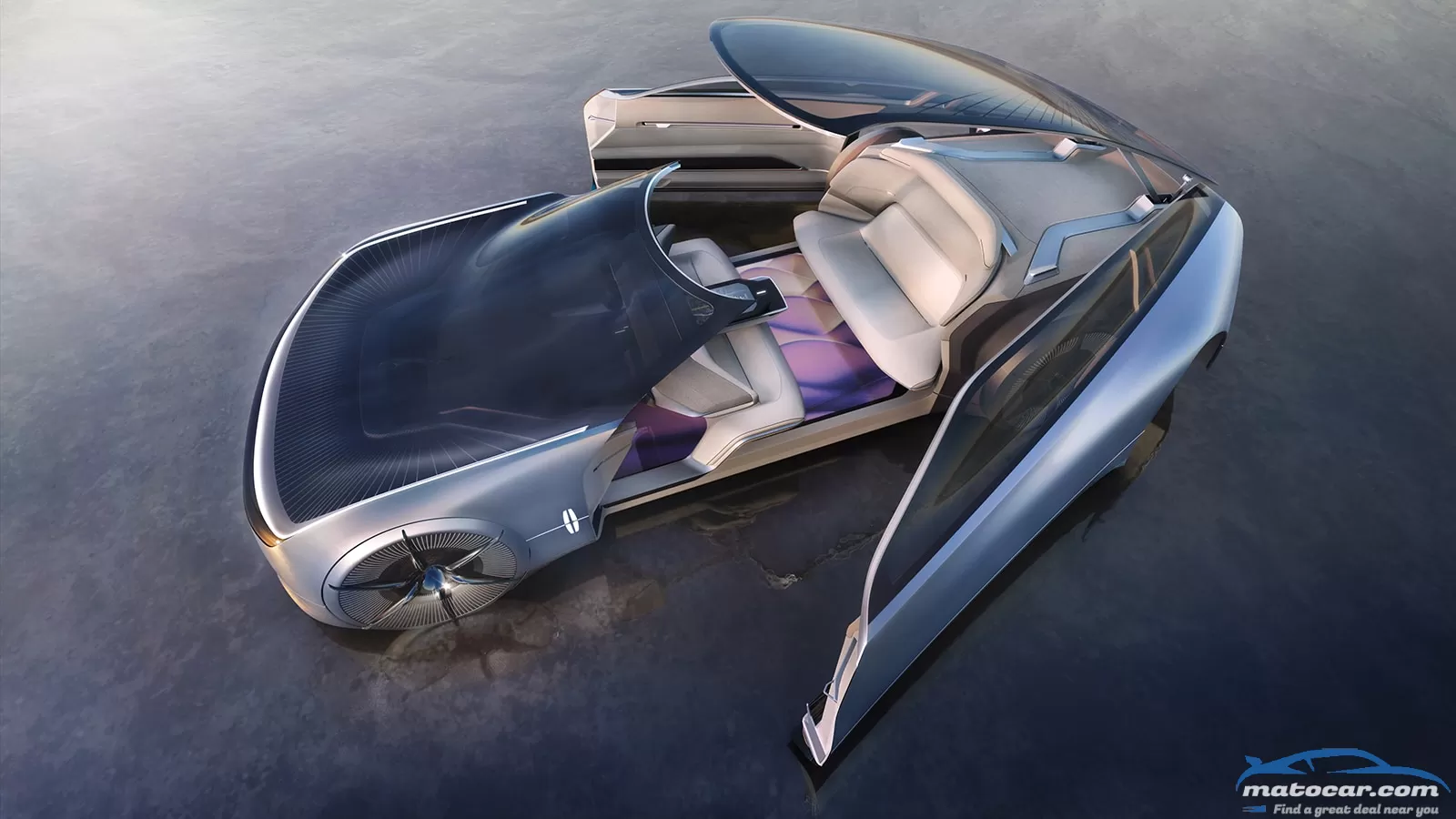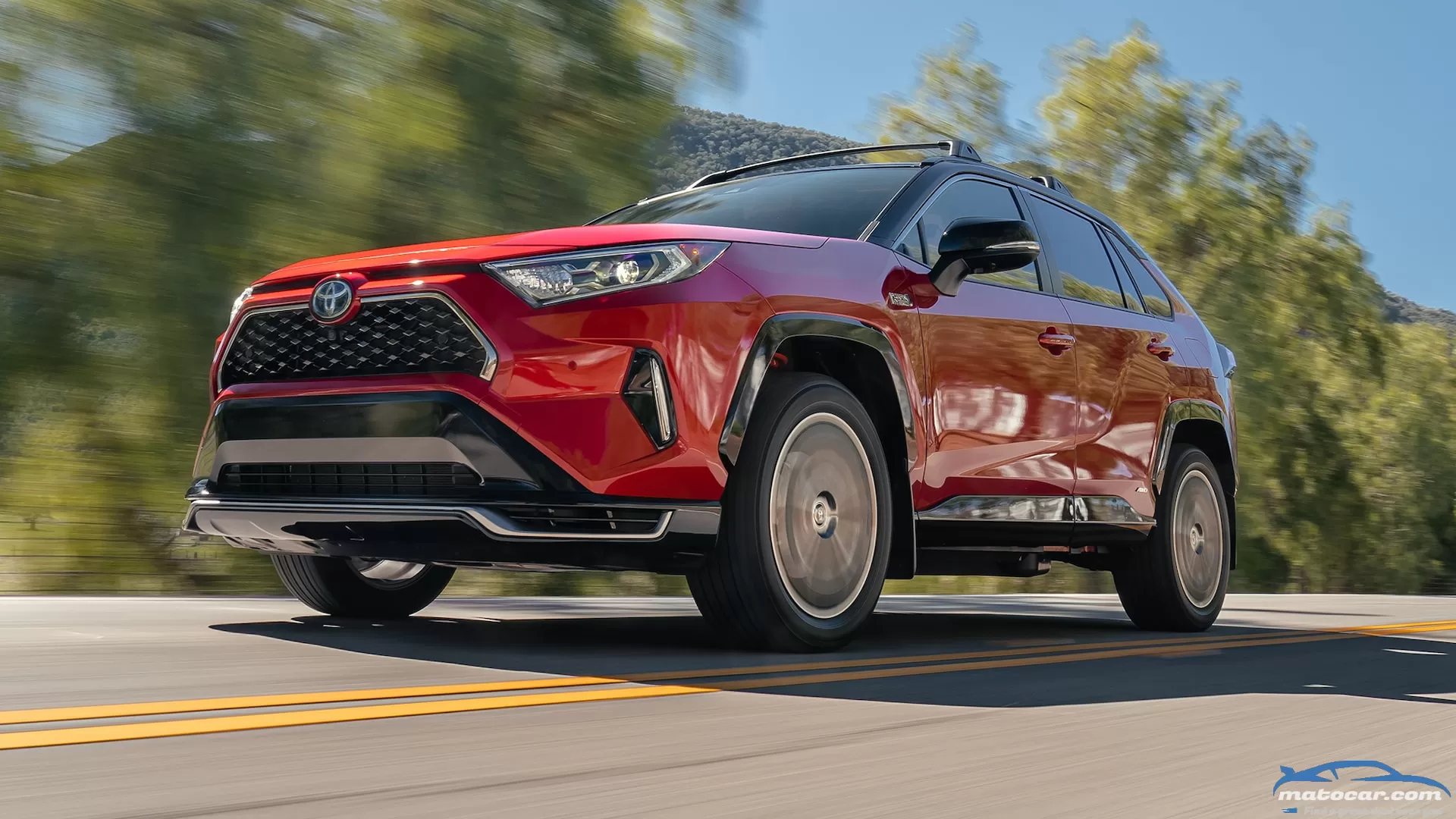Lincoln Model L100 Concept: Are 14-Foot Doors the Future of Luxury?

Brace yourself. The Lincoln concept debuting at the Pebble Beach Concours d'Elegance is a massive take on a future luxury electric car with a giant 14-foot reverse-hinged door—longer than some entire vehicles—and even features its own red carpet for a dramatic, royal arrival wherever it goes. Ford's luxury brand makes a grand statement with the Lincoln Model L100 Concept. The name is in celebration of Lincoln's 100th anniversary and pays homage to the automaker's first luxury vehicle, the 1922 Model L.
While the name is a nod to the past, the car is very much the future of Lincoln. The brand has promised a full electric vehicle lineup, with three new EVs by 2025, a fourth in 2026, and a fully electrified portfolio by 2030. For a glimpse into what the near-term EVs will look like, Ford's luxury brand first showed us the Lincoln Star concept, an electric streamlined SUV with dynamic lighting, transparent frunk, and coach doors. The Lincoln Model L100 is the long-range preview of a world where autonomous vehicles share the road with EVs driven manually.
Designing the Lincoln L100 From the Inside Out
Designers and modelers worked furiously to pull a show car together to toast the past and future simultaneously with a debut during the country's most ostentatious car event: Monterey Car Week. The five-passenger concept was designed digitally first and a foam model of the massive car grew from that. A version in sheetmetal, with the help of 3D printing, was being pulled together right up to the reveal deadline.
The final show car is imposing. It is longer than a Lincoln Navigator L; the long-wheelbase SUV is 18.5 feet long. The L100 dwarfs it at more than 20 feet long and 6 ½ feet wide with more than 16 feet of interior space. Lincoln Global Design Director Kemal Curic said they built the interior first and it is the largest that Lincoln has ever created. Then came the exterior, resplendent in metallic paint paired with frosted acrylic in lieu of chrome to create a soft white that transitions to blue.
In a nod to the past: the concept was designed so it can still be driven. In a nod to the future: the driver can decide to lean back, stretch out, and let the car drive completely autonomously, in theory.
Step Inside and Stretch Out
The 14-foot door is a piece of art with the most complex rear hinge the automaker, or maybe any automaker, has ever attempted. Once open you can remain upright as you enter the cabin—no yoga moves required to reach the queen and king seats in the back, which can be set to lounge mode with legs out and heads resting against the huge singular headrest that spans the cavernous interior. In autonomous mode, the dash disappears under the instrument panel and occupants have an unobstructed view of what is ahead.
The seating layout is designed to be social. Passengers can all face forward, or front passengers can swivel to face their rear companions. The digital floor can create a mood or experience, such as projecting the image of flying above the clouds in an attempt to take passengers back to the time of romance and travel.
The car plays up all the senses in a minimalist interior. Screens are not overpowering, there is no steering wheel or column. The animal-free materials in the cabin include a recycled suede-like fabric with amethyst accents.
Tap Into Your Inner Child and Steer Like A Toy Car
To steer, there is a center console chessboard with a crystal chess piece controller that replaces a traditional steering wheel. Think of how a child plays with a toy car, grabbing its sides and sliding it forward or twisting it to turn. The same motions with the chess piece direct the car. An adult from any seat can assume control—there is no set driver or passenger seat since there is no restrictive steering column to work around.
The lighting projects a red carpet onto the ground, but the concept also goes beyond puddle lighting. Tracking lighting detects you and follows you, 360 degrees, as you walk around the vehicle—an artificial intelligence feature designed to make you feel both safe and special, as if it knows you.
The frunk was designed to be a jewelry box and there is a heritage jewel inside: a crystal greyhound ornament under the transparent hood that harkens back to the hood ornament originally selected by Edsel Ford in the 1920s to symbolize the grace and elegance of the Lincoln brand, which the Ford Motor Company had purchased.
The L100 has a modern take on the Lincoln star logo on the front of the car. It is simple and backlit, like the apple on a MacBook. This is the first use of this new adaptation and could become a signature on future models.
It is only a concept, so powertrain can be fictional. Lincoln officials say the L100 would use a solid-state battery to provide greater range at less cost. The teardrop shape and long tail give it the aerodynamics needed for greater efficiency, along with closed-off wheels and air flow through the bottom of the grille.
At first glance the car appears to have an extremely long hood, but it actually starts almost in front of the front wheel with a cut line rear of the hood. The rear is sliced off, with a sharp angle like the back of a super yacht. The glass roof seamlessly melds into the body at the rear.
LED Lights are the New Chrome
Like most EVs, the concept plays up lighting as a new brand signature. LEDs are the new chrome, Curic says. The spinning wheels have smart covers that use sensors and lighting. The digital look makes it look like the car is gliding along the road. The glowing wheels also indicate the car's rate of charge, like giant analog dials.
The L100 sets the pace for the future, says Lincoln Global Product Director John Jraiche. "A lot of the form language and strategy will be in future Lincolns." He says Lincoln is not beholden to its past and is creating a new identify in the EV age. Some aspects are pure concept -the massive door won't make it to production—but the idea behind it, of the car welcoming and hugging its occupants, is an idea that will be taken forward to production models. Some of the lighting and the face of the L100 could be in the first Lincoln EVs to hit the market, Curic says.
The L100 project started before the Lincoln Star concept and the two proceeded in parallel, as two takes on the future of Lincoln from different time points, with brand signifiers in both vehicles. The team does not rule out a smaller version of the L100 for production.
"Lincoln has always been special to me and my family, especially my father and my grandfather. If there is one secret to Lincoln's longevity, it is the brand's ability to balance its core values with a desire to innovate and create the future," said Ford executive chair Bill Ford in a statement. "Lincoln has been one of the most enduring and stylish automotive brands in the world and in many ways, it is perfectly positioned for a second century defined by great design, zero-emissions and technology-led experiences."
You may also like
With so many wings 'n things, the newest Porsche 911 GT3 RS looks like it could fly. Before you even think about this über-911-GT3 taking flight, let us assure you, all of those spats, spoilers, flaps, louvers, and so on are there precisely so that this sports car stays firmly planted on planet Earth. They have the added side effect of signaling to the world that you didn't settle—if that's the right word—for the already excellent 911 GT3, itself a track-ready missile that so impressed us we awarded it our 2022 Performance Vehicle of the Year award.Aero, DynamicsIn what could be the most Germanic understatement of the year, Porsche says "The purposeful look of the new 911 GT3 RS is characterized by the large number of functional aerodynamic elements." Yes, the "purposeful look" Porsche refers to is the eye-popping array of body add-ons that regular GT3s lack and the tallest rear wing ever fitted to a production Porsche vehicle. Like on the base GT3, the RS's rear wing is of the swan-neck variety, in which the supports stretch up and over the plane of the wing, mounting to the horizontal surface from above. Unlike the regular GT3, the RS's wing is taller than the roof, with a hydraulically adjustable upper section.That adjustable piece works in concert with a race-inspired drag reduction system (DRS), which at the press of a button moves the wings to a lower-drag position to achieve higher straight-line speeds. Conversely, under hard braking, the rear wing can flip up into an air brake position. Porsche has made the various splitters and canards on the nose similarly adjustable, a move made possible by sacrificing the front trunk entirely to a lay-down radiator. Air exits that radiator via a pair of huge holes in the hood, flows over the roof, and is directed to the sides so that the engine air intakes in the rear—remember, 911s are rear-engined!—ingest cooler air.Along with a larger rear diffuser, those meaty louvers atop each front fender (for evacuating wheel-well pressure), and reworked rear fenders for improved airflow, the 911 GT3 RS is altogether more focused than the already sharp GT3. Downforce in the RS is up big time as a result, three times more than what a "normal" GT3 produces at 124 mph (for a total of over 900 lbs). At 177 mph, the GT3 RS generates 1,895 lbs of downforce.The Mechanical StuffPorsche takes so seriously the GT3 RS's aerodynamics, that it didn't stop at adding those wings all over the body. Its engineers turned their attention to the RS's mechanicals, too, reshaping the suspension links with airfoil-shaped profiles, a move that is said to contribute 88 lbs of downforce at "top track speed" at the front axle alone. According to Porsche, these new links increase the GT3's track width by a mighty 1.14 inches in front.To help overcome some of that extra aero, the 4.0-liter flat-six engine retains the same one-throttle-body-per-cylinder layout as the non-RS GT3 but receives new camshafts and sees peak horsepower rise from 502 hp to 518. It comes mated to a seven-speed dual-clutch automatic transmission with a shorter final-drive ratio than the non-RS GT3 and little air intakes under the body that help cool it. Porsche, always conservative, estimates the GT3 RS is 0.2 second quicker to 60 mph than a 911 GT3; given how we recorded a 2.7-second rip in dual-clutch 911 GT3 last year, figure on the RS being mind-bending. Top speed is said to be 184 mph.Huge brakes help slow things down, with the front caliper pistons growing a few mm larger in diameter than those on the GT3. The front rotors thicken by 2 mm to 36 mm; step up to the carbon-ceramic brakes, and the rotors grow by 2 mm in diameter up front (410 mm) and 10 mm in back (390 mm). Also, as on the GT3, the RS gets a rear-wheel-steering system, albeit tuned along with the rest of the suspension for sharper response, and drivers can independently adjust the compression and rebound settings for the front and rear via buttons on the dashboard. There also is a rotary drive mode dial for selecting Normal, Sport, and Track modes (with the DRS button in the middle) on the steering wheel.What a Lightweight!Porsche says the GT3 RS weighs just 3,268 pounds, thanks mostly to the carbon-fiber door skins, front fenders, roof, hood, and seat shells. Want some of that carbon fiber on fuller display? The available Weissach performance package leaves the carbon naked on the roof, hood, rear wing, and door mirrors; the kit also includes forged magnesium wheels that shave 17.6 pounds of unsprung weight from the car.Also lightweight? Your wallet, after you buy a 2023 Porsche 911 GT3 RS. The car starts at $225,250 (about $60,000 more than a normal GT3) and goes on sale early in 2023. Deliveries begin in the spring, and those with reservations can also choose to pay even more and get a Porsche Design Chronograph watch that incorporates titanium and various nods to the RS's styling.
With SUVs increasingly becoming the default choice for single-car families across the U.S., automakers are working hard to make them more fuel efficient. Last year's 20 most fuel-efficient SUVs averaged an impressive 55.5 mpg combined; this year, the 20 most fuel-efficient SUVs bump up their combined average to 60.9 mpg. And that figure doesn't include the increasing availability of electric SUVs. Last year there were about nine SUV EVs on sale. This year? Seventeen and counting. Provided you're not ready to make the leap to an electric SUV (all of which would make this list), what follows are the 20 SUVs that achieve the best gas mileage on the market in 2022.But before we dig in, some quick housekeeping. Our list of the most fuel-efficient SUVs for the 2022 model year was gleaned using EPA test data, and all vehicles are ranked in order from 20 to 1 using their combined mpg/mpg-e figure. When we had a tie, we then factored in electric-only range (if applicable) and highway fuel economy to break it.Plug-in hybrid, hybrid, gas, and diesel SUVs were all eligible to make this list, but as you'll soon see, plug-in hybrid and hybrid SUVs dominate. As previously mentioned, the 17 electric SUVs on sale in the U.S as of this writing weren't included. In case you're curious, they are:Tesla Model Y (up to 129 mpg-e)Hyundai Kona Electric (120 mpg-e)Kia EV6 (up to 117 mpg-e)Chevrolet Bolt EUV (115 mpg-e)Hyundai Ioniq 5 (up to 114 mpg-e)Kia Niro EV (112 mpg-e)Tesla Model X (up to 105 mpg-e)Ford Mustang Mach-E (up to 101 mpg-e)Volkswagen ID4 (up to 99 mpg-e)Audi Q4 E-Tron (up to 95 mpg-e)Mazda MX-30 (92 mpg-e)Volvo C40 Recharge (87 mpg-e)Volvo XC40 Recharge (85 mpg-e)Audi E-Tron (up to 78 mpg-e)Jaguar I-Pace (76 mpg-e)Porsche Taycan Cross Turismo (up to 76 mpg-e)Rivian R1S (69 mpg-e)Without further ado, here are the 20 most fuel-efficient SUVs you can buy today, in order from worst to first.
We've all known a Ford Bronco Raptor was coming, but nobody in the public Broncosphere has known for sure how Ford Performance planned to endow the Bronco with F-150 Raptor-worthy performance—would it do so using an EcoBoost V-6 (and if so, which one?) or a Coyote V-8? Well, now we know: The Ford Performance gang has worked its magic on the 3.0-liter EcoBoost twin-turbo V-6 from the Explorer ST, modifying it extensively to suit the Bronco Raptor's mission, which is to "reward the revs." (For more on the V-6/V-8 decision, head here.)That means the engine should produce meaningful power all the way out to the far reaches of the tachometer while the standard 10-speed automatic transmission's gearing ensures that power is easy to explore the top of the tach. Here's what it took to turn a family SUV motor into a desert stormer for a hardcore 4x4, plus the modifications needed to get that power safely routed to the ground.What's Under the Bronco Raptor's Hood?You'll recall that the 3.0-liter EcoBoost is basically a bored and stroked EcoBoost Nano family sibling of the compacted-graphite-iron-block 2.7-liter powering other Broncos, so it bolts in with relative ease. Relative to the Explorer application, this Bronco Raptor 3.0 features unique cylinder heads that eliminate the exhaust-gas recirculation and emphasize maximum air flow into and out of the engine.A giant high-flow intake airbox and filter drop air straight down into the turbos on each side, helping to reduce the overall restriction on the low-pressure side by 50 percent. The turbos themselves are new for the Raptor, and the plumbing to, from, and through the intercooler is improved to lower restriction. The combustion chambers flow more air, then aft of the turbos there is a full true dual exhaust system with 2.7-inch pipes and a new-to-Bronco four-position active-valve (Quiet, Normal, Sport, and Baja) that reportedly helps deliver a total drop in backpressure of 20 percent.The combined effect of all these mods is greater "boost durability," which means the boost sustains to enhance high-end power and prevents that feeling of power falling off a cliff as you near the engine redline. The new Baja drive mode also activates an anti-lag turbo calibration that further maximizes performance during high-speed desert running. As of press time, the team is still six weeks or so from finalizing the engine's state of tune and certifying it with the EPA, but we're assured it will make north of 400 horsepower. Considering this engine makes 400 hp at 5,500 rpm and 415 lb-ft at 3,500 rpm in the Explorer ST, we'd expect a healthy increase in peak power, probably at a higher rpm, with peak torque rising less but remaining available over a wider plateau.Driveline ModsIt takes a lot more torque to get a big 37-inch tire spinning than it does a 30-inch 255/70R16 or even a 35-inch 315/70R17 Sasquatch tire—especially if one tire ends up pulling the entire vehicle, due to locked axles and slippery conditions under the other three tires. Then there's the driveline shock that comes when a big, spinning tire suddenly finds traction and stops or slows upon landing from, say, a jump. To cope with these magnified driveline forces, both front halfshafts and both ends of the stronger front drive shaft get beefy constant-velocity joints—no simple universal joints here. The outer hubs and bearings are also strengthened.Following the torque aft, the rear drive shaft is also beefed up and it feeds a stronger new Dana 50 Heavy-Duty AdvanTEKrear axle (up from a Dana 44) made of thicker (9-mm) steel tubes capped at each end by a unique forging that helps widen the track. The differential is fitted with a bigger, stronger 235 ring gear (up from 220) and pinion, retaining the Sasquatch model's 4.70:1 axle ratio. Ford Performance developed both these axles and fits them to the Bronco DR race truck. They increase the track width by 8.2 inches front, 6.7 inches rear, relative to the Sasquatch package.Upstream of all this, the transfer case gets a stronger clutch for 4A automatic on-demand engagement, but it carries over the 3.06:1 low-range ratio and overall 67.8:1 crawl ratio. The standard 10-speed automatic is unchanged but for a revised torque converter and the addition of a second transmission oil cooler.Fearless Bronco Raptor 0-60 Time PredictionFord doesn't estimate acceleration times, but it says the base Bronco Raptor's curb weight should come in just under 5,750 pounds. If we conservatively estimate engine output at 430 horsepower, that gives a weight-to-power ratio of 13.4 pounds/horsepower. That's almost exactly what we measured on the last Ford F-150 Raptor 37 pickup we tested (13.3 lb/hp), and that full-size truck took 5.6 seconds to hit 60 mph on the same tires, with virtually the same transmission and a slightly taller axle ratio. So we're guessing the smaller truck will improve on that just slightly and lay down a 5.5-second 0-60 time, shaving at least a second off the quickest Bronco time we've measured.




0 Comments